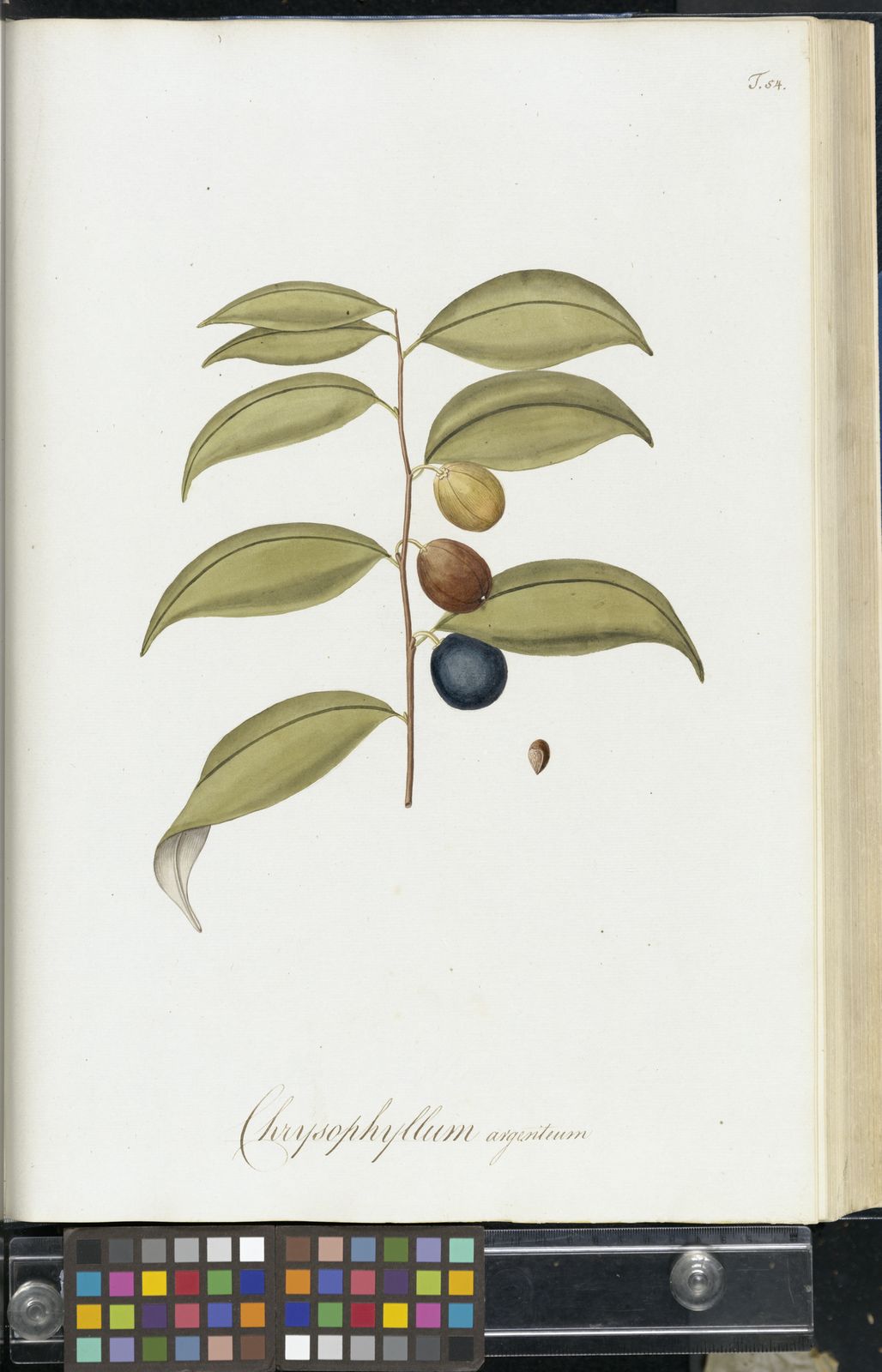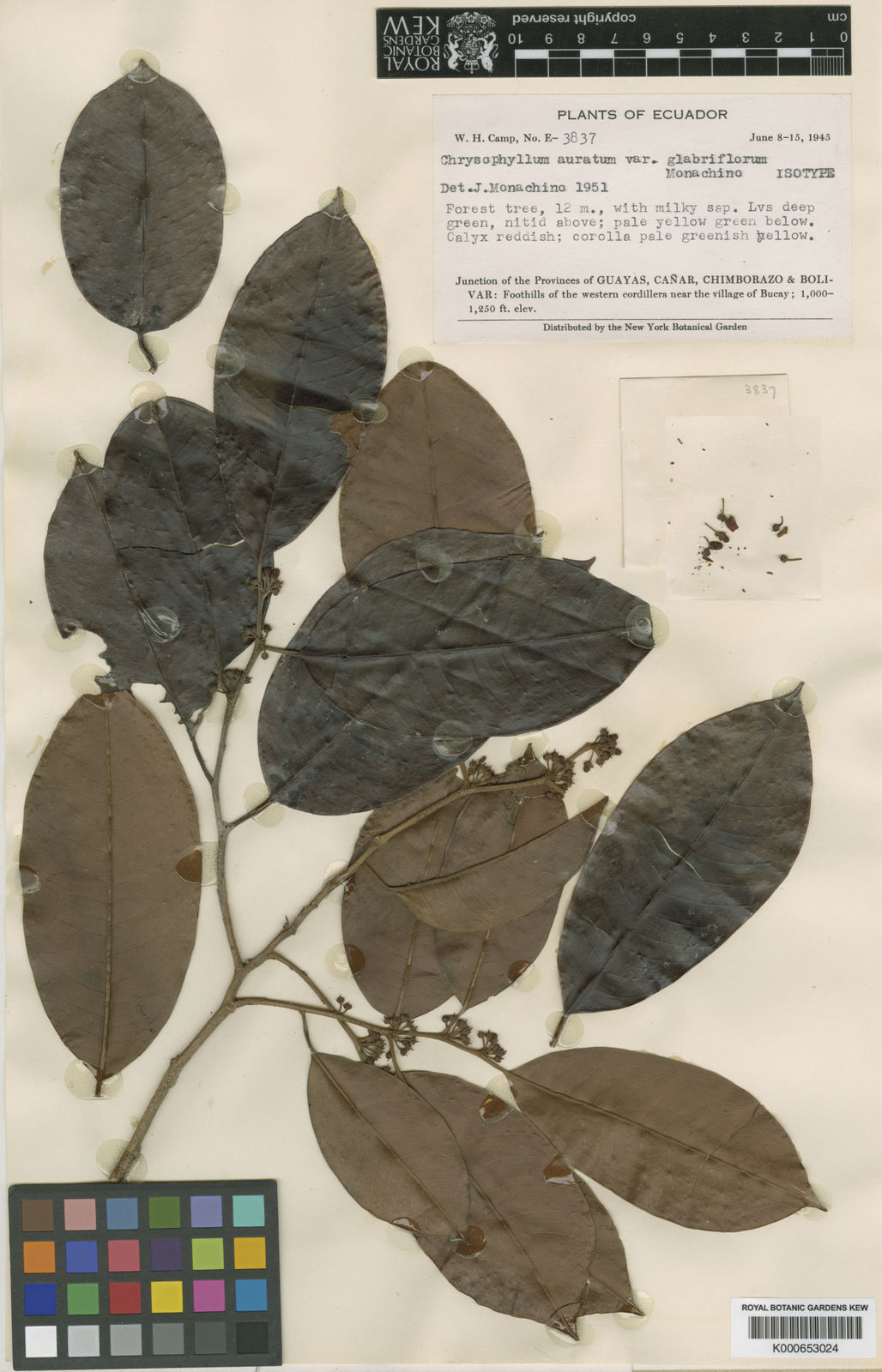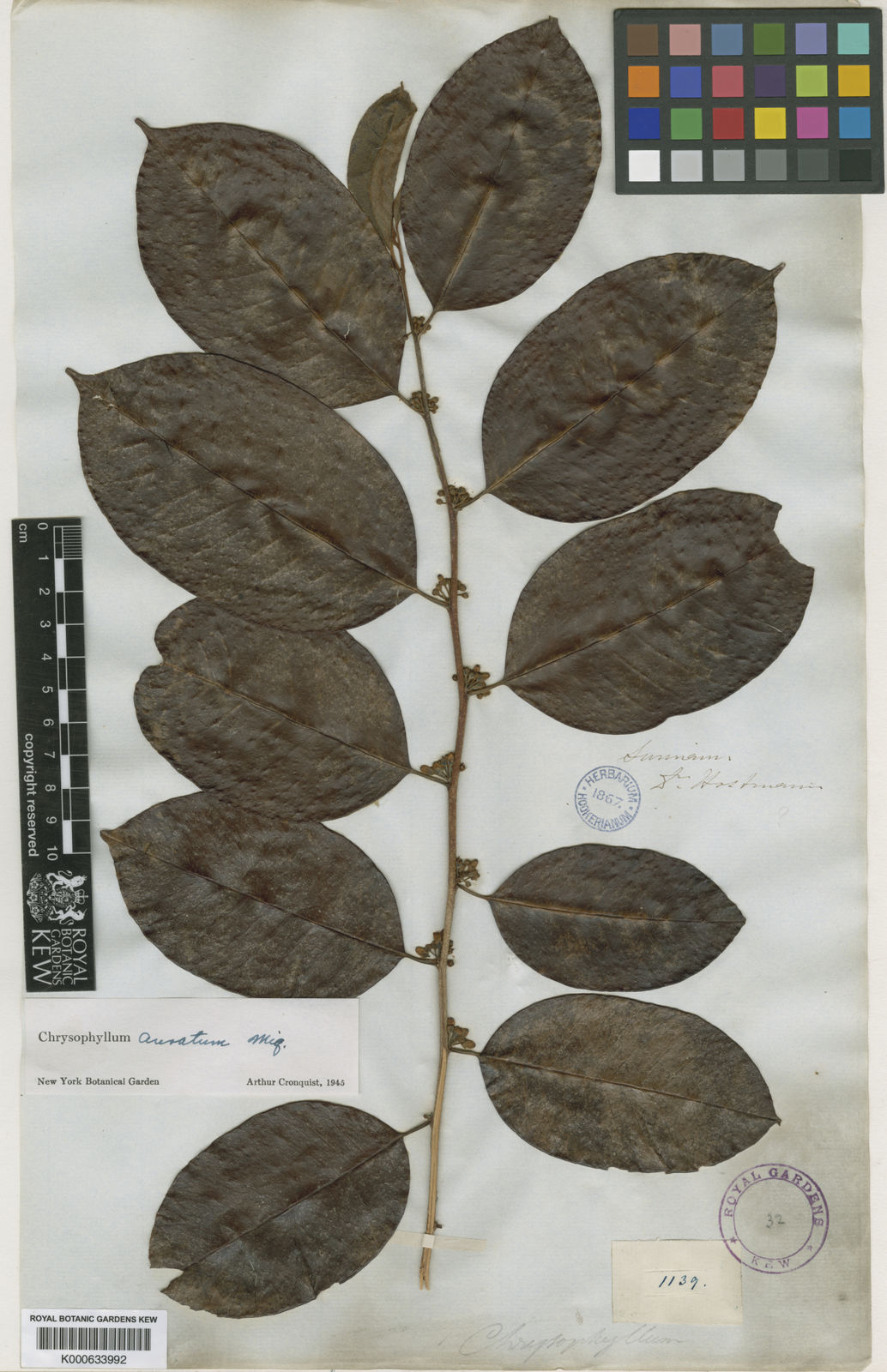Family: Sapotaceae
Author: Jacq.
Bibliography: Enum. Syst. Pl.: 15 (1760)
Year: 1760
Status: accepted
Rank: species
Genus: Chrysophyllum
Vegetable: Unknown
Observations: Trop. America
Description
The Bastard redwood, scientifically known as Chrysophyllum argenteum, is a remarkable species of tree that contributes to the lush and diverse landscapes of Tropical America. This tree belongs to the Sapotaceae family, which is renowned for species that often boast impressive foliage and useful timber. Chrysophyllum argenteum was first classified and described by the botanist Jacq. in the year 1760, as documented in “Enumeratio Systematica Plantarum.”
Thriving in tropical climates, the Bastard redwood is well-adapted to its native habitat. Its leaves are often noted for their silvery underside, which attributes a unique shimmer to the tree when viewed from below. This distinct characteristic not only adds to its aesthetic appeal but also provides a point of identification for botanists and tree enthusiasts alike.
In addition to its lush leaves, the Bastard redwood produces fruit that holds ecological importance in its native regions. These fruits are integral to the diet of various wildlife, thus maintaining and supporting the biodiversity within their ecosystems. Moreover, species within the Sapotaceae family frequently yield latex, a feature that may also be present in Chrysophyllum argenteum, contributing to its use in traditional and local industries.
Overall, the Bastard redwood stands as a testament to the rich biodiversity of Tropical America, with its striking appearance and ecological significance making it an essential component of the tropical forestry. The historical classification by Jacq. further enriches its botanical legacy, ensuring this species continues to pique the interest of researchers and nature lovers alike.
Common Names
Eng: bastard redwood, basterd red wood, smooth star apple
En: Bastard redwood, Smooth star apple, Bastard-Redwood, Basterd Red Wood
Synonyms
- Cynodendron argenteum ((Jacq.) Baehni)
Distribution
- Bolivia (native)
- Brazil North (native)
- Colombia (native)
- Costa Rica (native)
- Cuba (native)
- Dominican Republic (native)
- Ecuador (native)
- French Guiana (native)
- Guyana (native)
- Haiti (native)
- Jamaica (native)
- Leeward Is. (native)
- Nicaragua (native)
- Panamá (native)
- Peru (native)
- Puerto Rico (native)
- Suriname (native)
- Trinidad-Tobago (native)
- Venezuela (native)
- Windward Is. (native)
Additional Images

© copyright of the Board of Trustees of the Royal Botanic Gardens, Kew.

© copyright of the Board of Trustees of the Royal Botanic Gardens, Kew.

© copyright of the Board of Trustees of the Royal Botanic Gardens, Kew.
Leaf
Taken Mar 9, 2013 by C. Geniez (cc-by-sa)
Taken Mar 9, 2013 by C. Geniez (cc-by-sa)
Taken Mar 9, 2013 by J.-L. Smock (cc-by-sa)
Taken Mar 9, 2013 by J.-L. Smock (cc-by-sa)
Taken Mar 9, 2013 by J.-L. Smock (cc-by-sa)
Other
Taken May 20, 2009 by AMAP Lab – Guyane 2022 (cc-by-sa)
Taken May 20, 2009 by AMAP Lab – Guyane 2022 (cc-by-sa)
Taken May 20, 2009 by AMAP Lab – Guyane 2022 (cc-by-sa)
Taken May 20, 2009 by AMAP Lab – Guyane 2022 (cc-by-sa)
Taken May 20, 2009 by AMAP Lab – Guyane 2022 (cc-by-sa)
Sources
- WFO (No URL)
- IPNI (No URL)
- GBIF (https://www.gbif.org/species/2885742)
- POWO (http://powo.science.kew.org/taxon/urn:lsid:ipni.org:names:311591-2)
- PlantNet (https://identify.plantnet.org/species/the-plant-list/Chrysophyllum argenteum Jacq.)










